
Let’s Raya officially launched
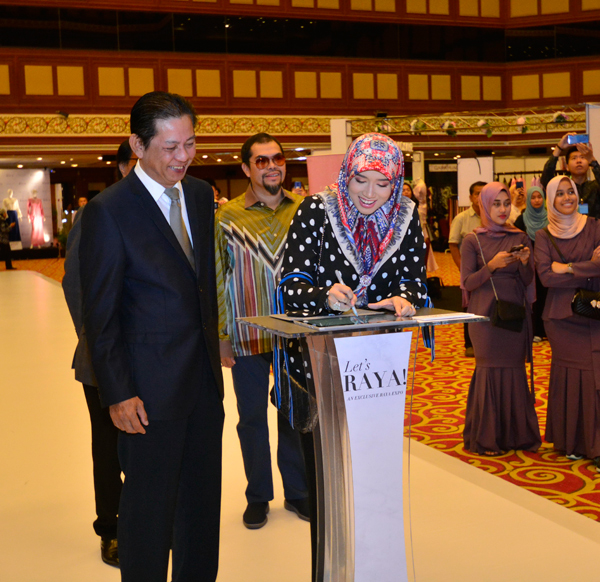
Pengiran Seti Aminah Binti Pengiran Othman, the guest of honour, signing the plaque, for the launch of Let’s Raya at International Convention Centre
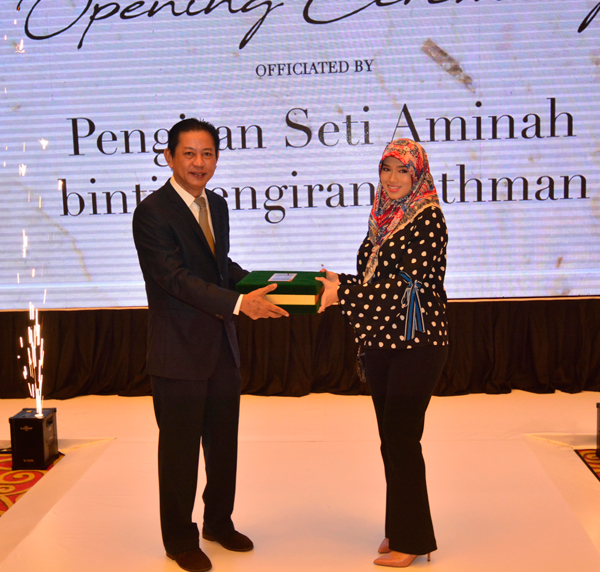
Guest of honour receiving a token from Yang Mulia Awang Hambali Bin Pehin Dato Haji Mohd Salleh, Managing Director of the Thevent.co
Yesterday, an opening ceremony that was honourably held to mark the 1st instalment of Let’s Raya, at the International Convention Centre, Berakas starting from 8-10th June 2018. Let’s Raya! Let’s Raya an exclusive raya expo is brought to you by Thevent.co an event company dedicated to creating fresh and prominent opportunities out of our imagination.
The opening ceremony blessed with the recitation of Surah Al-Fatihah and Doa Selamat. Moving on, the opening ceremony was led by the managing director of the Thevent.co Yang Mulia Awang Hambali Bin Pehin Dato Haji Mohd Salleh inviting the guest of honor, Pengiran Seti Aminah Binti Pengiran Othman d/a Yang Amat Mulia Pengiran Anak Haji Abdul Wadood Bolkiah bin Pengiran Lela Cheteria Sahibun Najabah Pengiran Anak Haji Abdul Aziz to officially launch Let’s Raya 2018.
Let’s Raya was inspired by the current and still prevalent consumer trend for convenience; the desire to be a one-stop for not only shopping of that easy comparison and variety of product availability in a venue set up of elegancy and quality. Providing their consumers with a prestige shopping experience, and last minute shopping place before raya! Let’s Raya will be ongoing from the 8th – 10th of June 2018 from 10am – 10pm, at ICC, Berakas.
With exciting participating vendors, shawls giveaway and exclusive daily draw prizes such as Prada wallet, YSL clutch, and daily cash vouchers Let’s Raya will definitely be a place for everyone to shop!
Let’s Raya is organised by Thevent. Co. and managed by D’Sunlit Sdn Bhd. For further inquiries, do contact 7247420 or follow them on instagram @lets.raya and on Facebook for updates #letsrayawithus #letsraya2018
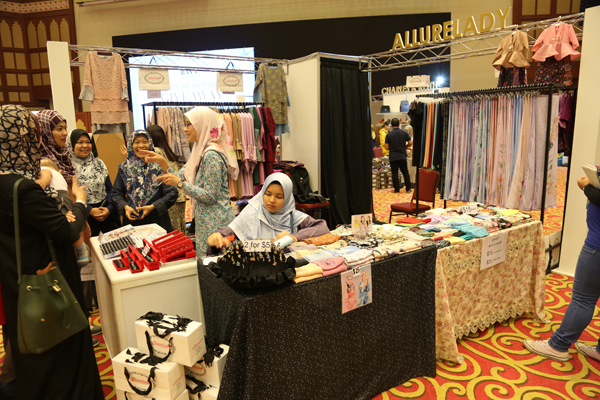
Allurelady
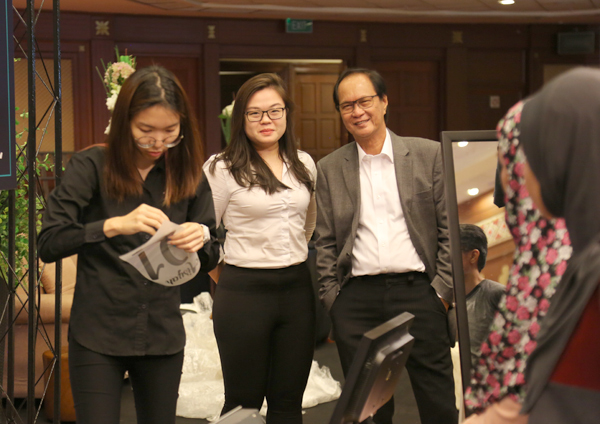
Pengiran Salleh Abdul Rahaman (right) was also in attendance
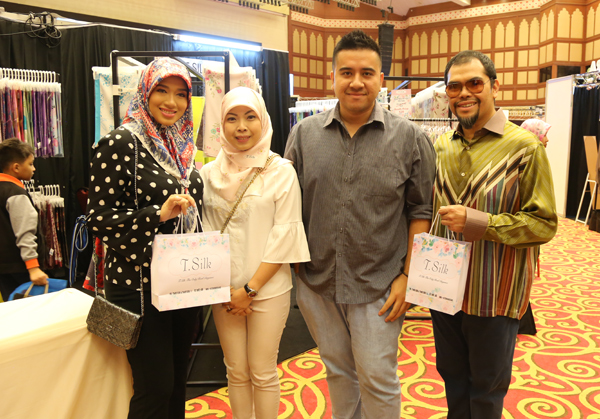
Yang Amat Mulia Pengiran Anak Haji Abdul Wadood Bolkiah with @twill_silk owners
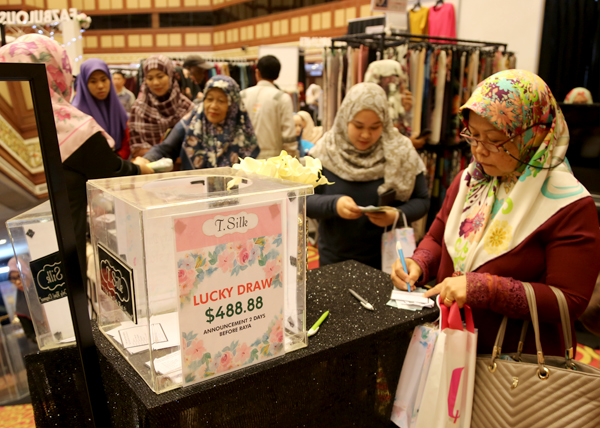
Lucky draw happening soon for @twill_silk customers
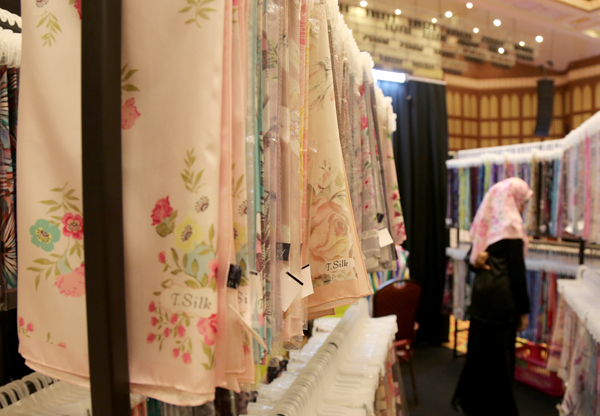
High quality materials from @twill_silk

Baiduri Bank as the official bank for Let’s Raya
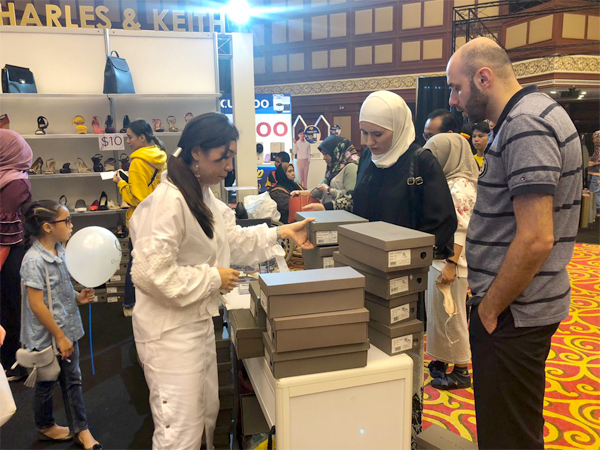
Good business at Charles & Keith. This is so far their biggest customers.
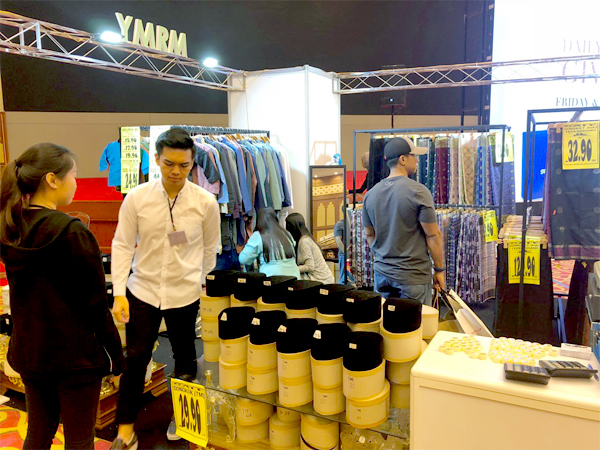
Check out YMRM booth
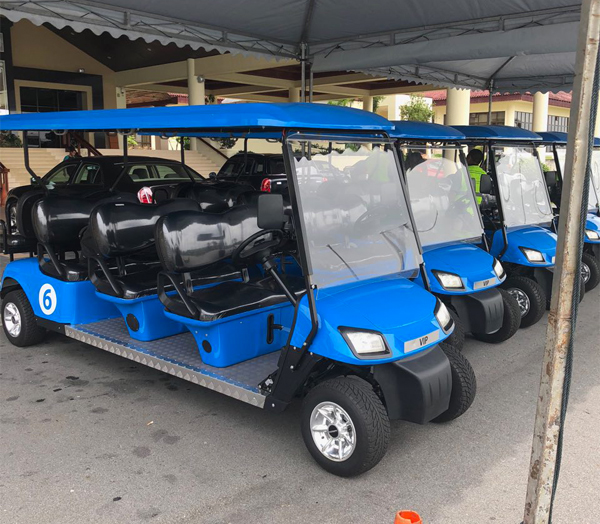
There’s a buggy service offered for customers. Starts at $1 I think.
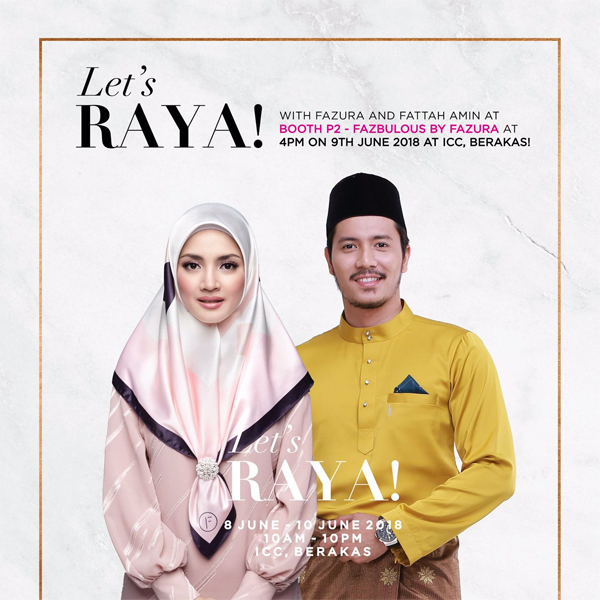
Both Fazura and Fattah Amin coming later at 4pm, 9th June
Tong Hock Hoi is heading to Russia

Tong Hong Hoi won a once in a lifetime, all-expense paid trip for two to watch the semi-final match at the 2018 FIFA World Cup™ in Moscow, Russia. He received the grand prize from Pg Azaleen bin PD Mustapha, Head of Retail Banking and Branch Network, Baiduri Bank recently
Visa and Baiduri Bank, the organisers of the “Win an All-Expenses-Paid Trip for 2 to the 2018 FIFA World Cup Russia™, courtesy of Visa” have announced the grand prize winner at a prize presentation ceremony held at Baiduri Bank Headquarters in Kiarong today. The promotion was held from the 1 February 2018 to the 30 April 2018.
Winning a once in a lifetime, all-expense paid trip for two to watch the semi-final match at the 2018 FIFA World Cup™ in Moscow, Russia, is Mr Tong Hock Hoi, an entrepreneur.
When interviewed, Mr Tong had commented. “I regularly use my Baiduri Visa card, but I never thought I would win, so imagine my surprise and delight! I am really happy to be the winner – looking forward to this trip!”
During the promotion period, Baiduri Visa Infinite, Platinum, Gold, Classic and Debit cardholders, who spend on their Baiduri Visa cards, received one chance for every BND 50 spent in the grand draw.
Mr Tong Hock Hoi and his wife will be arriving in Moscow on 8 July 2018 and treated to a 5-day/4-night accommodation with breakfast, all scheduled ground transportation, Visa FIFA World Cup™ themed merchandise, Visa Prepaid products, two tickets to watch the semi-final match of the 2018 FIFA World Cup™ and spending money of BND 5,000.
Pg Azaleen bin PD Mustapha, Head of Retail Banking and Branch Network who presented the prize commented, “We are delighted to be able to see such amazing response from the public for this promotion. This initiative is in line with our vision to enhance customer experience and to deliver a high level of quality products and services.”
On top of Mr Tong winning the coveted grand prize, 8 other monthly winners also brought home Visa FIFA World Cup™ themed merchandise.

With the other consolation winners of the “Win an All-Expenses-Paid Trip for 2 to the 2018 FIFA World Cup Russia™, courtesy of Visa”
Winners of 9th Audi quattro Cup Brunei to play in Austria
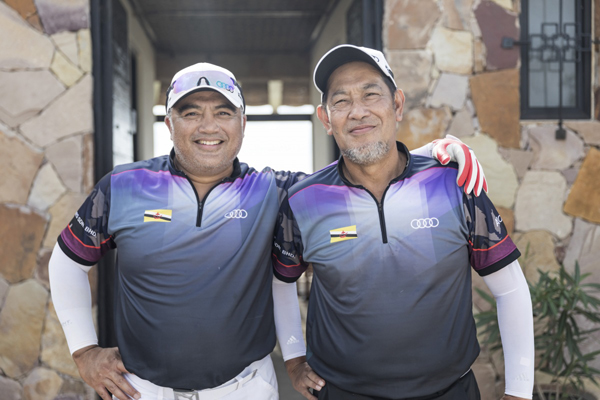
Pg Saiful and Hj Amir who played in last year’s Mexico World Final. Who will represent Brunei this year in Austria?
Unlike most local tournaments the top prize is an unforgettable golfing trip to the Audi quattro Cup World Final – every year held at a different prestigious international golf club. This year the venue will be the Golf Club Schwarzsee in Kitzbühel, Austria.
Also for this year’s local tournament a new rule will allow any golfer team of any nationality with a valid passport to qualify for the World Final.
“If you win it- you go to Austria!”
47 countries each year with 700 tournaments participate in the Audi quattro Cup featuring a 2-golfer team format playing under the Stableford system or ‘best ball’.
Interested golfers may inquire more at Audi Kiarong during opening hours.
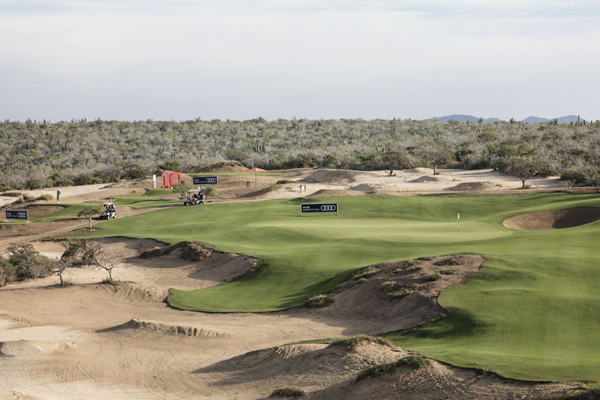
The Golf Club Schwarzsee in Kitzbühel, Austria
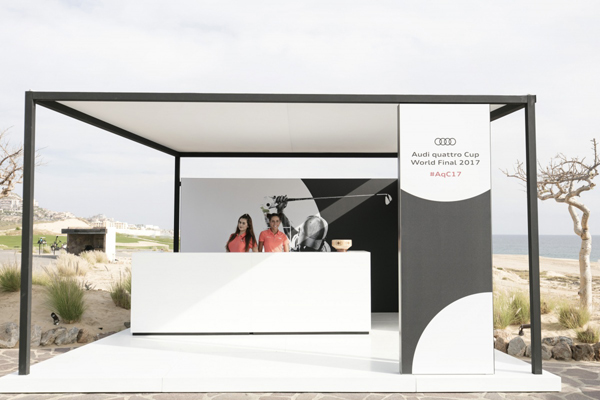
Local banks help financing RB’s latest fleet
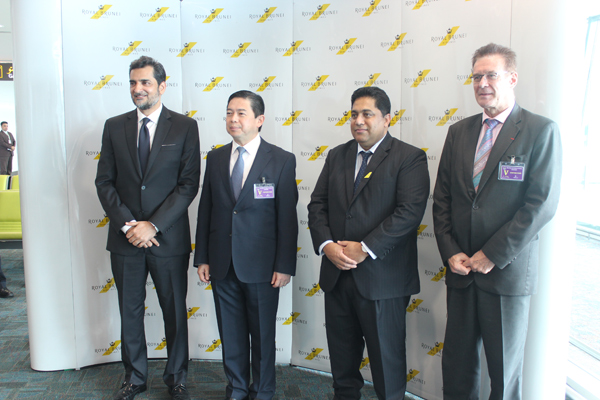
ang Berhormat Dato Seri Paduka Dr. Awang Hj Mohd Amin Liew Abdullah, the Minister of Finance II, as the guest of honour (2nd from left), Mr. Mubashar Khokar, Managing Director of BIBD, Mr. Karam Chand, the CEO of Royal Brunei Airlines (RB) and Mr. Pierre Imho, the CEO of Baiduri Bank
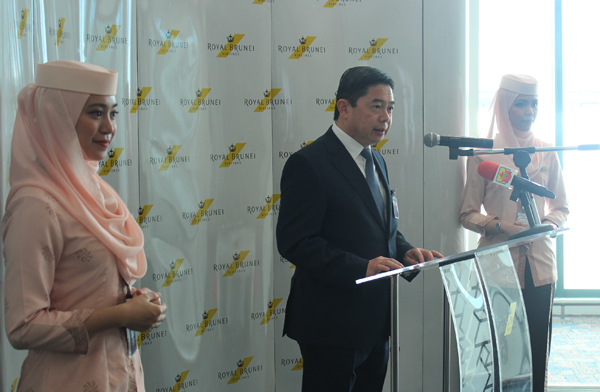
Guest of honour delivering his welcoming remarks at Brunei International Airport
Royal Brunei Airlines (RB) has closed the Islamic financing of one Boeing 787-8 aircraft and five Airbus A320neo and the conventional financing of two Airbus A320neo at a signing ceremony held at Brunei International Airport.
It was interesting to know that two local banks are involved in the financing where the islamic financing is under BIBD’s portfolio while the conventional term loan is under Baiduri Bank’s portfolio.
Present at the event was Yang Berhormat Dato Seri Paduka Dr. Awang Hj Mohd Amin Liew Abdullah, the Minister of Finance II, as the guest of honour. Signing on behalf of RB was Mr. Karam Chand, the CEO of RB whole Mr. Mubashar Khokar, Managing Director of BIBD and Mr. Pierre Imho, the CEO of Baiduri Bank signed on behalf of BIBD and Baiduri Bank respectively.
“The combination of conventional financing for 2 aircrafts with an islamic financing structure for 6 other aircrafts allowed Royal Brunei Airlines to achieve attractive terms. The new fleet allows RB to achieve a leaner cost structure from the combination of lower ownership and maintenance costs and lower fuel burn. Complete fleet renewal is a rarity in our industry and to achieve this by the end of 2018 will be a very significant milestone for RB,” said Karam Chand.
“Alhamdullilah, I would like to congratulate RB on another national milestone with the latest additions to their fleet, and also becoming our latest “Partner in Growth”. Together may we continue to support Brunei Darussalam’s economic diversification while strengthening Brunei’s positioning as a regional hub for economic activity and trade. The acquisition of these aircrafts is also another landmark transaction for Brunei’s Islamic banking and financial industry in general as it highlights our local capabilities to deliver on large complex Islamic transactions,” said Mr. Mubashar Khokar.
“Baiduri Bank is proud to enter into this partnership with RB, where we will be financing two unites of Airbus A320neo aircrafts. As a major local bank with a strong commitment to the Brunei market, Baiduri will continue to play an active role in providing financing to businesses, contributing to the economic growth of the country and its development programmes in order to meet the goal of Brunei’s Wawasan 2035,” said Mr. Pierre Imhof.
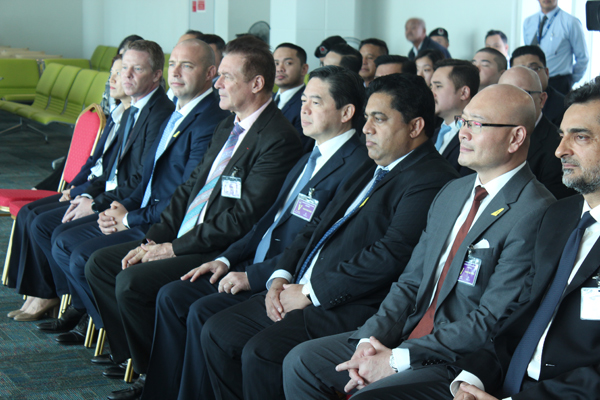
The board members of RB and other invited guests
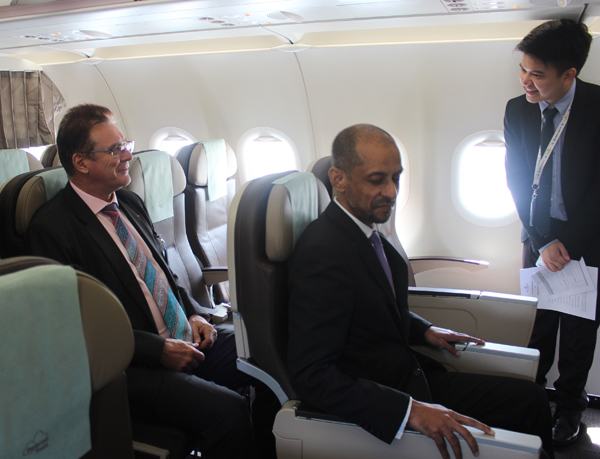
A quick visit to the newly A320neo aircraft
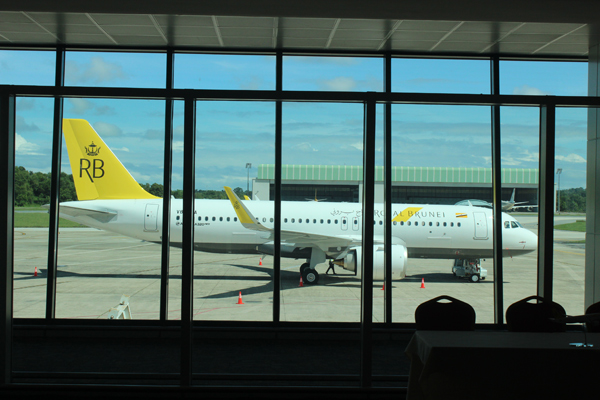
Shahrom drives home an X-trail

Mohd Shahrom bin Hj Sharbini (right) with his family and representatives from Brunei Shell Marketing and Boustead after Mohd Shahrom won the Nissan X-Trail in the final draw of BSM #BeliHelix II promotion

The five lucky winners were being feted
Brunei Shell Marketing Co Sdn (BSM) awarded its lucky winners for the recent #BeliHelix II promotion which was held at Times Square Shopping Centre two weeks ago. The promotion received an overwhelming entry of 15,000 from 8 February 2018 to 30th April 2018.
Hjh Siti Kurshiah Hj Anuar, Head of Commercial welcomed the winners and distinguished guests during her welcoming remarks and thanked all the customers for buying Helix products.
Mohd Shahrom bin Hj Sharbini, 40, was the lucky winner of the new Nissan X-Trail after being abled to start the engine after his third attempt. It was a close call between Mohd Shahrom and Hj Mohd Yusuf bin Hj Besar, the oldest person in the final draw as both attempted to ignite the engine of the SUV. In the end, the former was successful.
Also present during the final draw was BSM Managing Director Pg Shamhary Hj Mustapha and representatives from Boustead.
Goh Maycil won herself a Hong Kong tour package for two persons as the 1st runner-up. Second runner-up won a BND 2,500 cash card while the other consolation winners won a Macbook Air and Samsung LED TV respectively.

One of the consolation winners
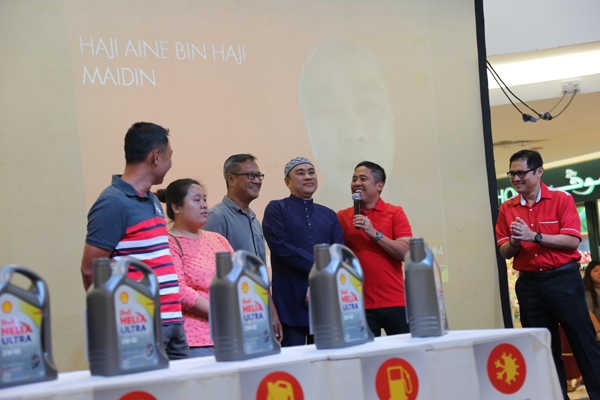
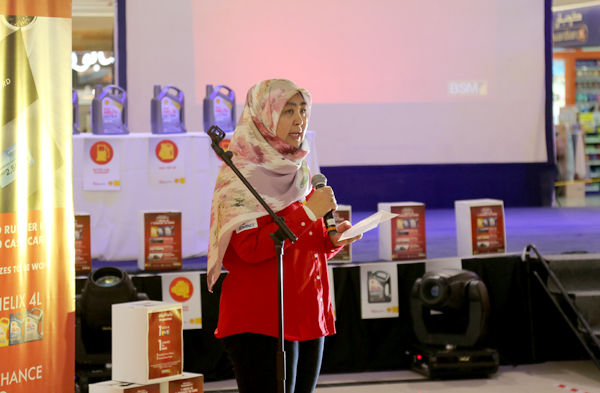
Hjh Siti Kurshiah Hj Anuar, Head of Commercial during her welcoming remarks
BIBD’s 8th annual Sirah Amal
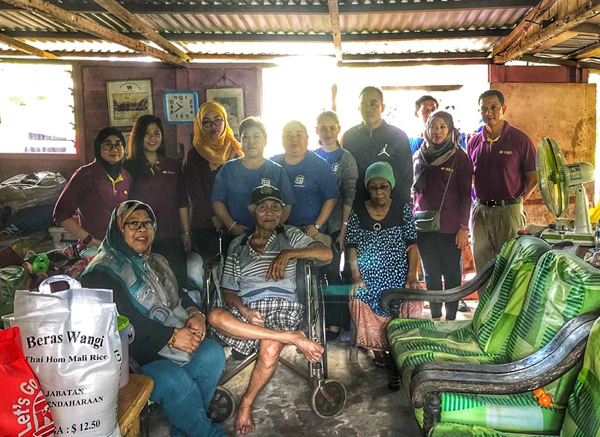
Bank Islam Brunei Darussalam (BIBD) recently began its eighth annual Sirah Amal initiative aimed at providing support and relief to the underprivileged members of Brunei Darussalam’s community across all its four districts.
The Bank and its employees came together to bring joy to the families they visited, contributing relief items and offering donations such as daily requirements, prayer necessities, raya items and others to support preparations during Ramadhan and for the upcoming Syawal. The 8th Sirah Amal started with a visit to families in the Tutong District.
BIBD Deputy Managing Director, Hajah Noraini binti Haji Sulaiman commented, “Alhamdulillah, today marks the beginning of the eighth BIBD Sirah Amal as the Bank and its staff continue its commitment towards contributing to our community. The BIBD Sirah Amal provides an excellent platform for us to share our blessings, especially with the less fortunate, so that they are able to better enjoy the festive months with their loved ones. We would like to also thank SKH (Sim Kim Huat) Department store for being our community partner for this year’s Sirah Amal event.”

Indian Chamber of Commerce loses appeal
The final straw. Everyone is entitled to appeal after being given a judgment. A few months ago, the High Court ordered the Indian Chamber of Commerce (ICC) to pay BND 950,000 in damages to prominent businessman Ramesh Jiwatram Bhawani (BND 650,000) and Abdul Hamid bin Abas (BND 300,000) in the biggest defamation suit in Brunei Darussalam. You can read my previous article here. The ICC then appealed the verdict to The Court of Appeal.
In the end, the Court of Appeal upheld the High Court’s judgment which means the appellants, ICC and 24 defendants, will still have to settle the liabilities of general and aggravated damages to both the plaintiffs.
Presiding Justice John Barry Mortimer with Justices Burrell and Seagroatt handed a written judgment where the judges upheld the previous awarding of BND500,000 to the first plaintiff Ramesh and also BND225,000 to the second plaintiff Abdul Hamid in general and aggravated damages, excluding the exemplary damage awarded of BND150,000 and BND75,000 that was awarded to both plaintiffs respectively in the High Court’s judgment, citing the lack of evidence in proving that the defendants issued the letter for profit gain.
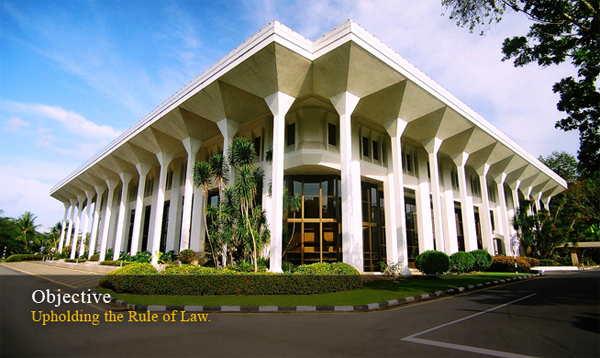
The Court of Appeal handed the final written judgment for the civil case between plaintiffs, Ramesh Jiwatram Bhawani and Abdul Hamid bin Abas against The Indian Chamber of Commerce and 24 of its members on 12th May 2018. Image courtesy of judiciary.gov.bn
It all began with a letter dated 5th April 2010 by the defendants to the Indian High Commissioner. It was written by the second defendant as President of The Indian Chamber of Commerce on the Chamber of Commerce’s headed notepaper and is counter signed by 23 other members or office holders of the chamber.
According the judgment, the letter contained, beyond argument, libellous material against Ramesh Jiwatram Bhawani. It noted that “Ramesh…. developed a business known as YMRM… He deals with counterfeit branded goods …. has recently been increasingly in various malicious activities…” There are even words such as “money laundering” and “mafia style gangster” and said in the lines that “Ramesh is widely suspected of laundering huge sums of money and threatening people in due course if at all someone tends to talk about it or report it.”
Other references were also made on Ramesh such as the use of “dirty words” and “dirty tactics”.
There was a second letter dated on 29th November 2010 also written on the notepaper of the Chamber of Commerce and signed by the fourth defendant as general secretary of the chamber. It generally disparages Ramesh alleging “dubious activities and anti-social behaviour”. It was more of a repetition of the first letter, alleging that his “so-called business activities are in actual fact a sham to cover his illegal money-laundering operations.
Both letters (dated 5th April 2010 and 29h November 2010) called upon The Indian High Commission to “investigate the matter rigorously.. and we are pretty sure that something worthwhile will be unearthed.”
Abdul Hamid bin Abas was also being implicated in the first letter. It didn’t specifically identify him by name but which can readily lead to his identification. The libel is that he abused his office as an officer of the Ministry of Foreign Affairs. He is identified as the brother of Haji Sabali who works in the Ministry of Foreign Affairs.
The Court of Appeal replied to the appellants’ arguments, six of them.
1st ground – That Justice Findlay erred in holding all the defendants liable in damages in relations to the publication of the 29th November 201 when the judge held that only the 1st and 4th defendants were liable for the defamatory matter in that publication.
Appeal of court response – Justice Findlay made it clear in his findings that although he found for the first plaintiff (Ramesh) on the alleged libel in the letter of the 29th November 2010, he made no specific award of damages in respect of it. In other words, he confined himself to the effect of the letter of the 5th April 2010.
2nd ground – Justice Findlay erred by awarding join and several damages against all defendants without apportioning the awards between the defendants according to their respective aggravating and exemplary circumstances.
Appeal of court response – All defendants are equally liable. The form and content of the letter of the 5th April constitutes equal responsibility. The evidence of the 14th defendant could not relieve him of his equal responsibility. He was one of the Public Relations Officers (and probably a management committee member). There is no valid distinction to be drawn between any of the defendants all of whom authored the libel by “confirming their support by signing.”
3rd ground – Awarding exemplary damages was wrong in law.
Appeal of court response – Refer to 6th ground.
4th ground – Holding the defendants responsible for damages flowing from the publication on 16th June 2010 was wrong in law.
Appeal of court response – There is no merit in the argument on absolute privilege. The High Commission acted upon the letter of the 5th April 2010. It circulated the generality of the libel to a significant number of Senior Bruneian Officials – 18 in all. Even if the High Commission itself were to establish some form of privilege, which is dubious, their publication was generated, even demanded, by the content of the 5th April letter from the Indian Chamber of Commerce. The backlisting which lasted for one year, was in their view a direct consequence of that demand. The letter, in the final paragraph, contains the exhortation to the High Commission “unless he is curbed and stopped…” which is in effect a demand that he be blacklisted.
5th ground – The publication on 16th June 2010 was a novus actus interveniens and independent of the defendant’s publications so there should be no liability. [novus actus interveniens means negligence in latin].
Appeal of court response – This area was dealt in the context of ground 4. The chain of libelous publication was not broken by any “novus actus”.
6th ground – The award damages was disproportionately high compared with other cases.
Appeal of court response – The judges agreed that Justice Findlay found these allegations to be “of the utmost gravity”. Looking at the exemplary damages, the court of appeal reviewed if the appellants have deliberately defamed for profit. Only then the plaintiffs be awarded for exemplary damages (punitive sum). There is no evidence that suggested the profit has motivated the defendants though it is possible, simply on the basis of an understanding of human nature, that some defendants had in the mind the commercial or financial benefit to themselves if they affected the destruction of the plaintiff’s business.
As for aggravated damages, the court of appeal reviewed and agreed that it is appropriate to award such damages or include int eh award of general damages an element for aggravating factors. This include malice and the increase injury to a plaintiff by a defendant. It was noted that the civil action by the plaintiffs commenced five years ago though the incident has happened 8 years ago. It was also noted that there has been no apology or offer of amends over the whole period of that time.
The defendants’ attitude has been dismissive and persistently insulting. The plaintiffs have borne the brunt of this arrogant defamatory treatment in this long interim. A serious element of aggravation is beyond argument.
According to the written judgment, exemplary damages has been excluded but the aggravated damages remained. This was a serious libel calculated to destroy reputations using powerful institutiions or authorities to that end. Their motion was nasty, vicious and coordinated.
Conclusion of the written judgement by the Court of Appeal
Upon consideration of similar cases, Justice Seagrott concluded that they are not out of line with what the appellants argued, and decided to dismiss other grounds of the appeal, excluding the punitive damage and ordered them to pay general and aggravated damages award to the plaintiffs as a final judgment. The judgment was written and submitted on 12th May 2018.
The respondents were represented by lawyers Pengiran Izad Ryan bin Pengiran Laila Kanun Diraja Pengiran Haji Bahrin and Too Shu Vin of Pengiran Izad & Lee while the appellants, represented by counsels Kamal bin Shaari and Eugene Loh Jit Kuan of Yusof Halim and Partners.


Rano’s thoughts: Despite the exemption of the exemplary damages, It is still the biggest defamation (libel) case in Brunei Darussalam with a total of BND 725,000. The second biggest case was where Abrahams, Davidson and Co. won a case against the defunct News Express back in 2002. The plaintiff was also represented by Pg. Izad and & Lee and the total award was BND 550,000.
The defendants have used their final straw through the Court of Appeal and they will have to pay a total of BND 725,000 by end of the month (May 2018). Defamation is definitely a no go zone and it has landed many individuals/professionals/companies into trouble. This is definitely one civil case that has been going around for years and after 5 years of trial, the saga of the civil case is over.
I just read an interesting article that even bloggers like myself can be punishable of “libel or slander” and even worse, in addition to being liable in a civil court for damages, defamation is also a crime punishable under the penal code with a fine and a jail term. So, what’s next?
Ladies and gentlemen, do think twice before you make such actions.
Mercedes-Benz Hari Raya Special

Jati Transport Sdn Bhd currently is having a Mercedes-Benz Hari Raya Special in conjunction with Ramadhan and the upcoming Hari Raya celebration.
Receive up to BND 2,000 Mercedes-Benz voucher when you book and register any Mercedes-Benz passenger car from now until 30th June 2018. The gift certificate of up to BND 2,000 will be given to all new car buyers which they can use to exchange for all new car buyers which they can use to exchange for all Mercedes-Benz merchandises, service & maintenance package, accessories and grooming services.
Call them at 244 1763 / 244 1777 or visit their showroom at Beribi showroom or the Autohaus.
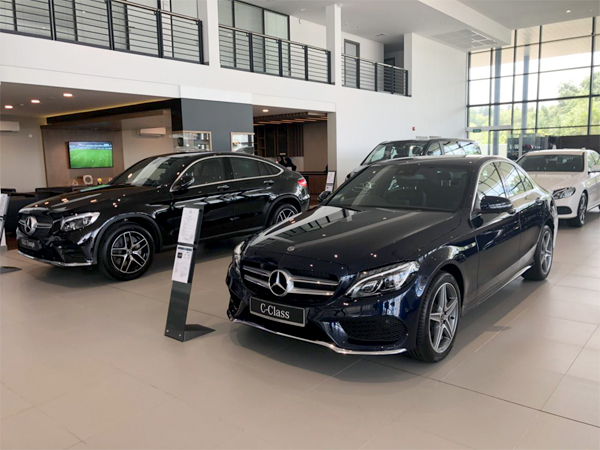
Autohaus showroom
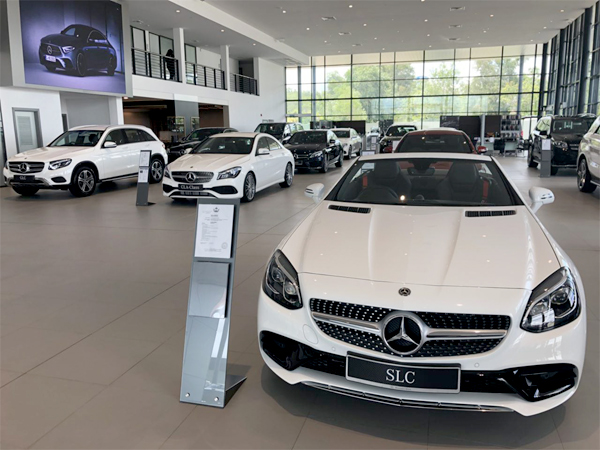
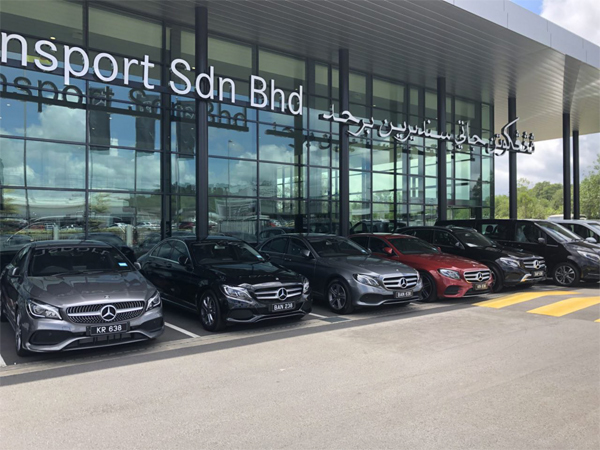
The models that you can test drive 🙂
First deliver of the A320neo aircraft
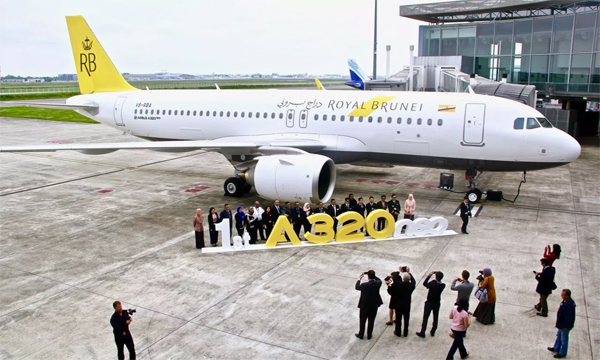
The new A320neo aircraft with members of the local media at Toulouse, France. Image taken from The Scoop.
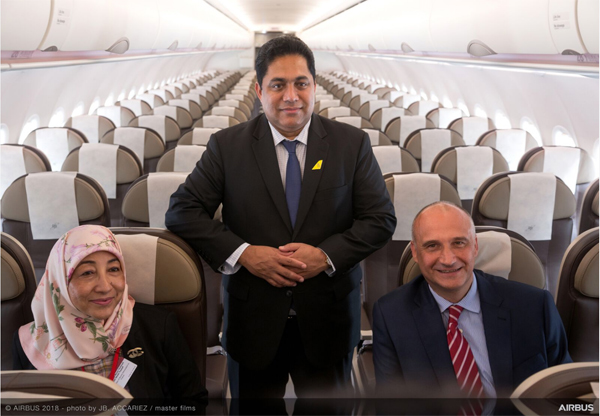
Her Excellency Datin Paduka Malai Hajah Halimah binti Malai Haji Yussof, Brunei Ambassador to France; Karam Chand, RB Chief Executive Officer (CEO) and Eric Schulz, Airbus Chief Commercial Officer inspecting the new A320neo aircraft
It would have been a perfect fit if I had a first hand view of the new A320neo purchased by Royal Brunei Airlines (RB) when it was handed over at Toulouse, France, a few days ago. This is the first of the seven firm aircraft (A320neo) and three option aircraft ordered by RB as part of its fleet renewal program back in 2014. So it’s good to see the plan turn to reality.
Present at the commemorative ceremony in Toulouse was Her Excellency Datin Paduka Malai Hajah Halimah binti Malai Haji Yussof, Brunei Ambassador to France; Karam Chand, RB Chief Executive Officer (CEO); Eric Schulz, Airbus Chief Commercial Officer; Mohammad Nazri Mohammad Yusof, Acting Director of Brunei Department of Civil Aviation; Mr Jason Tonich, Vice President and General Manager of GE Aviation Sales and Mrs Elsie Yamanouye, Director, Customer Program Management of Thales.
“Airbus A320neo aircraft comes equipped with Leap-1A26 CFM engines with some of the best fuel, noise, emission and operating efficiency in its class and will allow Royal Brunei Airlines to achieve significant cost savings and reduce its emissions footprint. We are based in Brunei on the Island of Borneo which has some of the most pristine environment on earth and we are pleased to be playing a part in preserving this,” said Mr Karam Chand, CEO of Royal Brunei Airlines.
“The RB A320neo aircraft is also the world’s first narrow body fitted with Thales Avant (Gen5) in-flight entertainment system and this will provide our guests significantly enhanced experience on board and match those generally available on long haul aircraft. These aircraft will have business, economy plus and economy seats with leather covering, USB power outlets and audio/video on demand at every seat. These features have been added keeping in mind the changing needs of our guests and to provide seamless and consistent service to our many transferring guests from the B787 Dreamliner long haul services to the A320 flights,” said Mr Chand.
“The new aircraft will also play an important role in maintaining and improving our operational reliability. RB’s on time performance is ninety percent, one of the best in the industry, however we believe we need to keep improving this as the vast majority of guests travelling to/from/via Brunei use RB services. The extended range of A320neo’s also provides RB with a lower risk option to pioneer new medium haul markets up to seven hours duration and we will be making new route announcement over the next several months,” added Mr Chand.
RB’s first A320neo aircraft will be in revenue service from 7th June 2018 with Singapore selected as the very first destination which is less than two weeks from now.
“Airbus is pleased that Royal Brunei Airlines is the latest airline to take delivery of the A320neo, the world’s preferred single aisle aircraft. With its exceptionally comfortable cabin, low operating costs and excellent fuel efficiency, the A320neo will complement Royal Brunei’s existing fleet and contribute to the airline’s continued success,” said Eric Schulz, Airbus Chief Commercial Officer.
RB’s current fleet consists of 10 aircraft; four Boeing 787-8 Dreamliner and six A320ceo. Eight new aircraft will join its fleet by December 2018 (a fifth B787 and seven A320neo). RB will have one of the youngest fleet in the world with an average age of 2 years by the end of 2018. The national carrier of Brunei Darussalam today operates out of its hub airport – Bandar Seri Begawan to eighteen destinations across the world.
Can’t wait for the rest of the A320neo aircrafts to be delivered to Brunei. You can read more news of the delivery from The Scoop.

The traditional welcoming gesture for the new A320neo, a two minute water salute as a sign of respect and gratitude at Brunei International Airport
New Brother printers
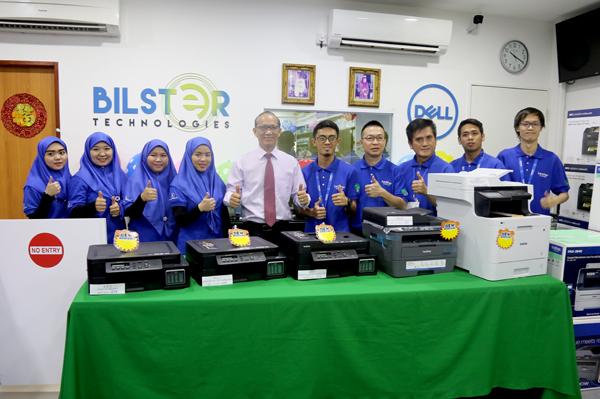
Vincent Pao with the staff of Bilster Technologies with the new Brother printers line up
Brother printers are as popular these days because of its cost effectiveness. The previous models have been well received from local consumers.
Now Bilster Technologies have brought in newer models to the Brunei market and now the Brother printers are on offer which will include refillable ink-tank printers like the Brother T310 and the Brother T510W plus laser printers perfect for SME and home businesses like the Brother MFC-L2715DW.
The Brother T310, T510W and T710W is an all-in-one A4 printer with speeds of up to 27 pages per minute and with the ability to handle to printing of multi-pages of documents with the help of its onboard 128 of RAM (faster printing). The three models will have refillable ink-tanks, the printing output can reach up to 6,500 pages per full tank for monochrome printing and 5,000 pages for colour printing.
The Brother T310 is priced at BND 238, the Brother T510W is priced at BND 288, the Brother T170W is priced at BND 318. The T510W and T710W have wireless capabilities.
If you want for business printing, then check out the Brother MFC-L2715DW and the Brother MFC-L8900CDW. Both are laser printers and also support wireless printing.
Norsurya Hj Sabali, Executive in charge of Business Development at Bilster Technologies said that the Brother printers provide three years warranty coverage and this gives more confidence and trust on Brother printers to the customers.
For more information, you can call 223 0871 / 223 0872 of visit their their showroom at G27, Citis Square.

The Brother T310

The Brother T710W

The Brother MFC-L8900CDW

The older models of Brother printers


